#precession of the equinoxes
Text
Armillary Sphere Model for the demonstration of precession of the equinoxes and nutation
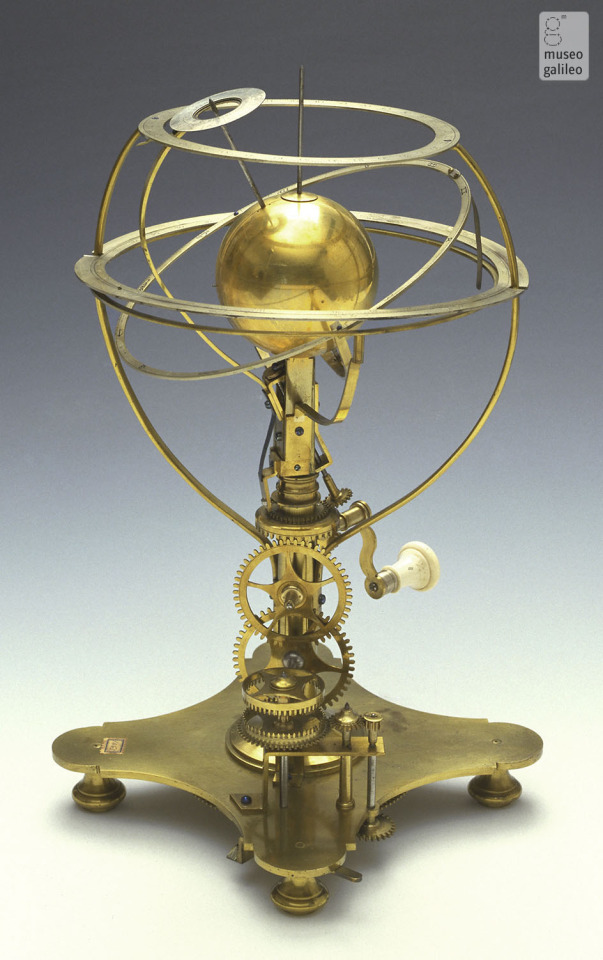

Model for explaining the very slow motion called precession of the equinoxes. The phenomenon—which sparked scientific and doctrinal controversies—was investigated for several centuries. It was one of the arguments cited by Copernicus in support of his astronomical system. The model, actuated by a series of hand-operated gears, also simulates the nutation of the Earth's axis
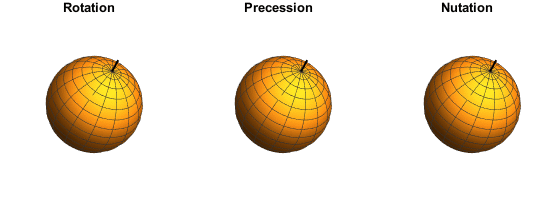
Precession: “the slow movement of the axis of a spinning body around another axis due to a torque (such as gravitational influence) acting to change the direction of the first axis. It is seen in the circle slowly traced out by the pole of a spinning gyroscope”
versus
Nutation: “a periodic oscillation of the earth's axis that causes the precession of the poles to follow a wavy rather than a circular path”
2 notes
·
View notes
Text
Today’s winter solstice:

:
Summer solstice from six months ago:

Superimposed:

2 notes
·
View notes
Text

this song has some catchy parts but the moon is in the 7th house for about 2 hours every day, and jupiter is conjunct mars around once a year, with other "alignments" happening quite often. now whether or not we're in the age of aquarius or it's still ahead of us is a subject of some debate....
0 notes
Text
Brogan Bentley
Precession of the Equinox I
0 notes
Text

"Kiss of Venus"
Talon Abraxas
Venus around the Sun maps out the 5 Pointed Star over an 8 Year Period. It is thus ringing a Harmonic of 72-ness or 72°. This is beautifully referred to as “The Kiss Of Venus.”

The numbers 72 and 360 are consistently seen in the mapping of time and the stars:
72 x 360 = 25,920
This number is the number of years for the Precession of the Equinoxes through the twelve Zodiac Ages. Each Age is 2160 years in length (12 x 2160 = 25920).
Ancient people around the world had been obsessed with keeping track of the movement of the sun along the horizon, and that some of them figured out the precession, by observing maximum points of movement through many years. It therefore takes 72 years, for the galaxy to move one degree (1°) in relation to he background of star constellations associated with the twelve signs of the Zodiac.
eg 2 — The Pentacle within the Circle has its 5 arms or legs apart at 72°. This is because 360÷5=72°. This also means that the connections of Earth to Venus to Sun display a Phi Φ relationship or relationShift.
In the Heavens this is reflected in the path of Venus around the Sun which takes an 8 year cycle to fully trace out the Pentagram or 5 pointed star. If you were to measure this time from another perspective, in terms of Venus years, it would take 13 years to complete the pentagram. This astronomical wonder clearly embodies the 3 consecutive Fibonacci numbers 5:8:13.
Excerpt from: The Book of Phi, Volume 6 ~ The 3 Phi Codes
Image: courtesy of John Martineau in his book ~ “A Little Book Of Coincidences” but originally by ~ James Ferguson’s “Astronomy Explained Upon Sir Isaac Newton’s Principles 1799”.
56 notes
·
View notes
Text
Disclaimer: not a native Thai speaker, still learning 🙏
...also, not an expert on tarot and astrology btw djsdhsj
Fortune favors the bold


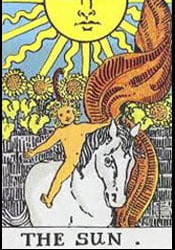

- XXI The World (-> Earth/Ongsa) = accomplishment, seizing opportunities the universe presents, confidence in one's place in the world
- XIX The Sun (-> Sun) = joy, positivity, enlightenment, light illuminating the truth
- X Wheel of Fortune = destiny, soulmates, change, growth, the wheel turning in one's favor

ก็เหมือนกับโลกที่มันต้องมีแสงสว่างจากพระอาทิตย์ไง /gaaw meuuan gap lohk thee man dtawng mee saaeng sa waang jaak phra aa thit ngai/
-> โลก /lohk/ = Earth, the world
-> แสงสว่าง /saaeng sa waang/ = (bright/brilliant) light
And that's what she's been doing all episode 🥺♥ Sun's brightness and warmth give her confidence!





ชอบสิ /chaawp si/
AAAAAAAAHHHHH this can be read as both 'They/That person does like you' and 'I do like you'

ถึงดวงอาทิตย์ของเรา จากโลกของเธอ /theung duaang aa thit khaawng rao, jaak lohk khaawng ter/
Sun's horoscope

How is Sun a Gemini, you may ask? It's me, I asked, so I went and researched it for everyone lol
In astrology, there's two ways to divide the ecliptic into the 12 signs - tropical and sidereal.

(source)
Western astrology generally follows the tropical zodiac which is based on the Northern hemisphere's seasonal cycle, lining up the equinoxes and solstices with the ecliptic.
Vedic/Hindu astrology follows the sidereal zodiac which is based on the observable sky and thus accounts for the Earth's axial precession and the seemingly backwards movement of fixed stars over time, caused by the Earth's axial tilt of ✨ 23.5 degrees ✨
All of this to say- Sun is a Gemini in sidereal astrology!
First contact
Aylin's coming out of her shell!! I loved her this episode, trying to make friends, expressing herself more and being genuinely funny.


มนุษย์พี่นี่โคตรไร้สาระ /ma noot phi nee khoht rai saa ra/
เมื่อกี้น้องว่าไงนะ /meuua gee nong waa ngai na/
-> ไร้สาระ /rai saa ra/ = nonsensical, lacking meaning/substance, which got subbed as "That's bull." earlier in the same scene??, combined with โคตร /khoht/ here, which is an impolite colloquial intensifier, sounds like "You're full of crap, senior human." lmao


1) ฉันกับยัยเจริญพรจะคอยช่วยแกแล้วกัน /chan gap yai Charoenporn ja khaawy chuuay gae laaeo gan/
2) เจริญพร /ja reern phaawn/ = Yes.
2) Charoen's full first name is เจริญพร /ja reern phaawn/:
เจริญ /ja reern/ = to prosper, prosperous, to pray/chant;
พร /phaawn/ = blessing, benediction
เจริญพร /ja reern phaawn/ is a word used by Buddhist monks for 'yes'/assent/response, just like ครับ /khrap/ or ค่ะ /kha/ are used, for example. There's a whole set of vocabulary/register that's specifically used by and with monks and in the context of Buddhism.
1) Tin calls Charoen ยัยเจริญพร /yai Charoenporn/ several times this episode lmao - ยัย /yai/ stems from ยาย /yaai/ = grandma, and can be used in a friendly way to call a woman or derogatorily (kinda like 'hag', I guess?) It's all in the context but that can be said about a lot of things in Thai language djsdhsjh
It's comparable to colloquial ไอ้ /ai/, a prefix for mostly male names, e.g. ไอ้ติณห์ Ai'Tin, to call someone in a friendly or- cursing way:

ไอ้มนุษย์บุลลี่ /ai ma noot bully/
Obligatory 1st person pronoun moments because there's only the two three*, she doesn't use any otherwise:



1) เรา /rao/, 2) calls herself alien again, 3) ข้า /khaa/, which sounds old timey
*edited to add her fortune teller shtick
Quick translation of the preview texts

Well... I like [the roses?]
That's nice
You liking [?] makes me happy
Thank you so much, Earth
Earth, it'll be my birthday in a few days. If I asked you for one thing, would you give it to me?
What is it?
Can we meet?
#23.5 degrees#23.5 spoilers#thai gl#ongsasun#aylinluna#milklove#viewjune#milk pansa#love pattranite#view benyapa#june wanwimol#ford arun#earn preeyaphat#local woman harps on about linguistics#i've lost sight of this post's flow with how many times i rearranged and added stuff so if this reads as incoherent- welp.
50 notes
·
View notes
Text
Vedic Astrology 101.

What is Vedic astrology?
vedic astrology is an old Indian science practiced for more than 5000 years ago with the objective of studying one's personal harvest gain, wedding, and overall daily activities. It was not originally intended to judge one's character or predict his life.
the proper name of Vedic astrology is: "Jyotisha or Jyotishya (from Sanskrit jyotiṣa, from jyót “light, heavenly body"), It is one of the six auxiliary disciplines in Hinduism that is connected with the study of the Vedas." ( vedas are a large body of religious texts originating in ancient India )
this means that vedic astrology is deeply intertwined with Hindu philosophy and spirituality but that doesn't mean one must be a converted Hindu to be able to study and enjoy the art of vedic astrology.

Difference between vedic and Western/tropical astrology :
for now, i will not go deep into the main differences between both systems i will only highlight the difference in system (zodiac) utilization and the overall most important details.
Vedic astrologers, use the Sidereal Zodiac, that are calculated planetary positions based on the fixed locations of the stars in the sky. However, due to the precession of the equinoxes, Indian astrologers adjusted their calculations to keep in sync with the stellar positions. Thus, their system is known as sidereal, or star-based.
Western / Tropical astrology, on the other hand, uses the tropical (fixed) zodiac. This system relies on four seasons that represent the Sun’s movement, equinoxes, solstices, as well as the tilt of Earth on its axis.
vedic will utilize the "whole house system" instead of "Placidus" system meaning that each sign will occupy one whole house instead of only a cusp of a certain house
vedic will also not count the outer planets also known as "pluto ,uranus and Neptune" because those planets are used by the westerns to replace a shadow "imaginary point" called rahu and ketu (lunar nodes) that bring the same "effects" ... although a few astrologers will continue to use the outer planets for transit purposes despite them not being part officially of the vedic astrology approach because those planets are way distant of the earth and don't provide enough evidence of their effect upon affecting someone's life yet for those who choose to include on their overall analyses will use the outer planets as one of significator of generational impactful changes and behaviors ( this will be expanded on a post focusing on the outer planets)
also along with the outer planets, the sideral zodiac doesn't use the asteroids as well!.
and the Vedic considers the moon as the most important planet because the moon is the one responsible for the mind's emotions behavior mood instincts emotional overall state, and feelings. the moon represents our inner self and the sun our outer self.

The houses :
each house has their respect sign ruler and planet ruler :
aries - mars
taurus - venus
gemini - mercury
cancer - moon
leo - sun
virgo - mercury
libra - venus
scorpio - mars
Sagittarius - jupiter
capricorn - saturn
aquarius - saturn
pisces - jupiter

hi thank you for reading until the end ;) i will make a part 2 and 3 and will also link the parts here once i post them :)
part 2.
linktree.
#vedic astrology#sideral astrology#astrology101#vedicastrology#sideral#vedic astro notes#vedic astrology notes#astrology
45 notes
·
View notes
Note
Why are there 72 agender maidens in heaven. Such a specific and arbitrary number
Also I can’t hang out with 72 people all at the same time!
The number 72 has thematically appeared as a numerical symbolism in Judaism, Christianity and Islam. For example, God split the nations into 72 languages following the construction of the Tower of Babel, God have 72 Names, Jesus had 72 disciples, there are 72 sealed demons in the lesser keys of Solomon, 72 translators of the Septuagint, 72 doomed sects of Islam, 72 books of the Catholic canon, 72 maidens in heaven and etc.
The number 72 is specific as it has to do with both the precession of the equinoxes and the amount of time that the star Sirius is out of view in the night sky every year. Therefore that number, and some of its factors, show up in many myths.
66 notes
·
View notes
Note
Hi Julia~❄️ loving your work !! 💙
I'd like to know about Astroid Regulus in Leo 29° in positive aspect with Mercury, Neptune & Chiron.
Thank You! 💙
Fixed Stars in Astrology

Navigation: Masterlist✦Ask Rules✦Feedback Tips
Askbox✦Sources✦Paid Readings

Hi Siren!
So, Regulus is a fixed star and not an asteroid and fixed stars are not commonly used in western astrology and so I can explain what they are, but I am not going to do a in deep post about them into it because I don't qualify as a the best source on the subject (there's a module extra at my school on the subject but I still can't do it 😅).
1. What are Fixed Stars and How They Work:
Fixed stars are distant celestial objects in the night sky that appear to be stationary relative to each other and form the background against which the planets and other celestial bodies move. They are considered "fixed" because their positions change very slowly over time, about 1 degree every 72 years. Fixed stars are grouped into zodiacal and non-zodiacal constellations. These constellations have mythological narratives associated with them, known as catasterisms, which vary across cultures. These stars were traditionally an integral part of astrology, lost some significance over time, but are now regaining importance in astrological interpretation in the western astrology, as far as I, Julia, know, it has always had its place in Vedic astrology..
2. Different Cultures and Narratives:
Different cultures have unique narratives associated with the constellations. Even cultures with limited contact have narratives that share similarities, indicating a shared human connection to the stars. Western astrology often uses Greco-Roman mythological narratives for interpretation, incorporating elements from other mythologies as well.
3. Benefic and Malefic Fixed Stars:
Fixed stars can be classified as benefic or malefic based on their astrological influences. For example, Algol (β Persei) is considered one of the most malefic stars, associated with challenging and intense energies. In contrast, Spica is considered one of the most beneficial stars.
4. Precession of the Equinoxes and Positional Changes:
The precession of the equinoxes causes gradual shifts in the positions of stars and constellations over long periods of time. This phenomenon impacts the positions of stars in relation to zodiac signs and constellations, which can lead to differences in interpretations between traditional and modern astrology.
5. Astrological Implications:
Fixed stars can be used in horary astrology to provide insights into future events and projects, particularly when they align with significant points in the chart, like the Sun's conjunction with Regulus in Virgo. They offer indications about qualities such as authority, generosity, courage, and more.
6. Finding Fixed Stars in Your Birth Chart:
The positions of fixed stars in your birth chart are determined by factors such as their brightness, size, and their alignment with key points like the Ascendant, Descendant, Midheaven, and Imun Coeli. Astrologers use methods like the Ptolemaic method to calculate these positions and offer insights into an individual's life and traits. But since I know you're not going to do the calculations by hand, you can look up fixed stars on astro.com or on my favorite program Pegasus (this program has a very early 00's interface, but it calculates very well and has the option in english and other languages).
Extra Sources:
Estrelas fixas na astrologia: o que é, quais são as de cada signo e mais!
Estrelas fixas: o que são e como são usadas na Astrologia
Estrelas Fixas no mapa astral
(CC) AstroJulia Some Rights Reserved

#astrojulia#astrology#witchblr#astroblr#all about astrology#astro community#astro observations#astrology notes#witch community#astrology basics#fixed stars#natal chart#birth chart
68 notes
·
View notes
Text
Proper Motion and Precession over 200k Years
Proper Motion
Proper Motion describes the small changes in the positions of stars due to constant motion of the universe. Some stars are moving towards Earth and some are moving away. Some move at an angle from or towards Earth and result in a change to a star’s position in the night sky (essentially, North/South: Declination and East/West: Right Ascension). These changes are almost always so small that they only become apparently over very large periods of time, usually thousands if not hundreds of thousands of year
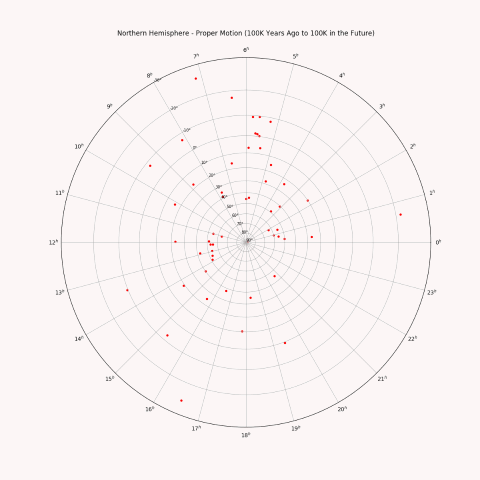

Precession of the Equinoxes
To be more accurate however, a star’s position is both the result of the star’s own movement (proper motion) as well as the changing perspective of an observer. Most stars barely move in ten thousand years, but will appear to have move dramatically since the entire Earth’s axial tilt shifts under our feet. Precession gradually turns the sky in a circle and will have a profound impact over its 26 thousand year cycle. Combined together, stars will shift and crawl across the sky as well as appear to be rapidly flung and rotated in a circle around the changing celestial pole


The code and python package I made to make these star charts is available on my GitHub and as a Python package
#star map#star chart#astronomy#stellar navigation#proper motion#precession of the equinoxes#precession#constellations
9 notes
·
View notes
Text
Are certain Nakshatras Doomed in a given World Age?
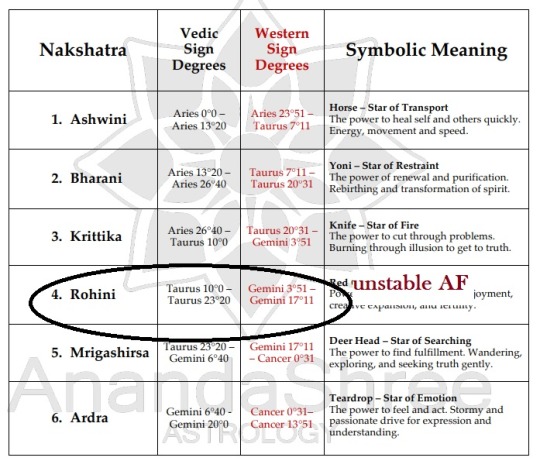
Recently I've been researching the less popular but more analytical Vedic School of Thought that superimposes Nakshatras with Tropical Placements. That means that if you cast your chart this way, your Nakshatras will stay the same, but your signs will go back to the positions of your Tropical chart. I respect that idea although I don't fully feel convinced of it yet because I respect the Astrologers that use it (Ernst Wilhelm, Vic di Cara) and because there is some scientific reasoning behind it, given that the Earth's orbit is irregular and tilts over the years, thus changing the calculations, which they call precession of the equinoxes. I admit the mathematical part of it is not my strong suit, I'm a psychic medium that just loves to use Astrology to share her impressions, but I'm not a brilliant mathematician and I'm an even worse physicist, largely due to lack of proper opportunities for a good teacher that would be needed to compensate for my more abstract way of thinking.
If you want to find out your own sign placements based on your Nakshatras just follow a table like HERE but there are many other of the same sort online on other websites too.
The issue with the degrees of the signs moving at certain historical periods of time is that not all Nakshatra signs and rulerships are compatible with the newly changed Astrological sign values. That creates problems in perceptions of certain Nakshatras in Mass Consciousness in our time. However, if we assume the degrees of Nakshatras as mobile...some Nakshatras are going to struggle at any given time, except for the time when Nakshatras are temporarily perfectly aligned with their traditional degrees (which last happened briefly 1500 years ago and won't happen for millennia to come according to THIS link resource). So due to the precession of the equinoxes, the degrees of Nakshatras are always mobile...which can cause interesting shifts, such as the New Astrological Year starting in a completely different than traditional Nakshatra, so not Ashwini. Right now for example, according to tropical calculations we are entering the Aries season in the Nakshatra of Uttara Bhadrapada, making this Nakshatra the initiator of reach solar cycle for years to come...until the Nakshatra degree changes again in a couple of hundreds of years, and the Aries sign will be ruled by Purva Bhadrapada instead.
Astrologers preaching this School of Thought educate not associating Nakshatras to any specific cycles or zodiac signs, viewing them as seperate entities dependent on the Moon's mythology more than the whole chart or movements of the Sun over the horizon...but I just can't get behind that concept, given that...well, the Nakshatras are still determined by SOME kind of calculations. The Nakshatras are not exempt from the unwavering rhythm of nature. I wrote a lot of posts with elemental associations to the Nakshatra and their planetary rulership (which btw doesn't change even if you go by tropical degrees) because Nakshatras are living entities...and they enter our lives through our charts as a portal...but still based on these new and improved calculations. I can get behind the numbers changing as the planet itself evolves, given the pressure of the chaos of Nature, but it simply cannot be separated from the signs of the planets, as both influence them. Sure, you can study it independently, but the final result is still going to be a planet influenced by both its sign and house AND the ruling Nakshatra.
That creates an interesting result, that in given world ages, certain Nakshatras will struggle to begin with, while others will struggle more in certain padas, making their Divine Energies harder to exist at a given time frame. If I started moving the Nakshatras around in different time periods, we could be sitting here forever discussing all sorts of hypotheticals, so for the purpose of usefulness to this generation, let's stick to the way things are now, and will be for at least the next 100 years, since the changes in degrees are slow (but still, sign calculations already moved almost a whole degree just since I was born and I'm not that old yet lol). Again, to understand my writing consult the table in the link above.
An example Nakshatra that came to my mind, that is perceived really negatively in this world and age is Rohini. Why? Because to have that Nakshatra in your chart, you need to have a given planet in the sign of Gemini. Considered that Rohini is Moon ruled, and Mercury views Moon as its enemy according to planetary friendship tables, Rohini essentially doesn't like being in the Mercury ruled sign of Gemini. Traditionally, Rohini is positioned in the Venus ruled grounded Taurus, which is already problematic to begin with, since Venus views Moon as its enemy too...but the Moon is still exalted in Taurus. The Moon is grounded and settled by Venus, as it has no enemies. The Moon is scattered, curious, but two faced and unstable in Gemini. Now what do we get when we put Rohini, an emotional, impressionable Nakshatra ruled by the Moon, away from Venus and into Mercury? An attention seeking person, that uses duplicity and manipulation to fulfil its need for intimacy. Historically, the Venusian element provided stability of skill and material resources, grounding the Nakshatra energy. Nowadays, Rohini can display more fickleness than form. And it is not even their fault...but the fault of when they were born. In the past, being born in Rohini probably provided one with serious material stability and good family pedigree, which Venus assures, making her a worthwhile wife, or as they say traditionally, the favourite wife, despite her whimsical nature. To understand more about the dark Nature of Rohini in our times, I encourage you to watch this video by @thehiddenoctave, where the theme of manipulation and mind games is explored in depth.
Another interesting example to explore is Shravana Nakshatra, which moves its Rashi from Capricorn to Aquarius. That preserves the Saturnian theme, but adds the energy of Rahu to the mix. Notice the stories that surround Shravana natives. First of all, they get media attention very easily. A lot of actors/actresses with these placements are idolised. Then a lot of them are also viewed as toxic, unstable or taboo breaking (Rahu, but also the Outcaste nature of the Nakshatra). But the media attention so many of them get nowadays...the scrutiny of the tabloids? That's Rahu and Aquarius at its finest. The rise and fall. The highs and lows. My guess is, historically this Nakshatra was more private due to Capricorn's restrictive nature, but has gained more exposure with Rahu...which has also sadly added a lot of trauma to its natives.
Certain Nakshatras are doing better, and still have at least some portion of them in their traditional signs, temporarily letting them off the hook. But that raises an interesting question. What will happen to a phenomenon such as Sun's exaltation, once the vernal equinox moves on to the Nakshatra of Purva Bhadrapada in a couple of hundred years?
Sun traditionally exalts in Ashwini Nakshatra...but that has to happen in the sign of Aries. What will happen when the precession of the equinoxes moves Ashwini completely into the sign of Taurus...where the Sun is uncomfortable, due to Sun and Venus being enemies? The potential for an individual to have a fully working, exalted Sun will be eliminated for that particular time in human history.
And isn't that what we are going towards? Sun rules our independence and individuality...yet we are more and more dependent on technology, connections, societal conditioning, in order to have any freedom at all. More and more finances are required for a person to have any mobility or opportunity in the world. In a couple of hundred years, when the Aquarian astrological dominance intensifies, independence or individuality that goes with an exalted Sun will no longer rely on the power of Spirit, that Aries represents, but be completely dominated by the luck of being born in a stable financial family environment, which Taurus represents. So those who have the power to express themselves are those, who can afford it because they have a stable enough backing. Since Ashwini is partially already in Taurus, we can already see it happening in the world, slowly and gradually.
I understand traditional Vedic Astrologers sticking to perfect symmetrical calculations from 1500 years ago. I understand their love for this perfection scheme. I understand the exploration of the cyclical nature of Nakshatras. I do it myself. But I think that this is nevertheless an interesting concept to explore, that takes Astrology to a whole new level, accounting for very real societal changes gradually taking place in front of our eyes. It shows that Nakshatras behave differently in different timeframes, responding to the world we live in. And doesn't that add a very real and practical dimension to Astrology, its omnipresent influence on Earth as a living being, regardless of the phases its going through?
#astrology#vedic astrology#jyotish#vedic astro notes#vedic astro observations#astrology notes#astro observations
79 notes
·
View notes
Note
Regarding Astrology: since the horoscopes were invented thousands of years ago, isn't the simplest explanation just that they used to work, but now don't because earth's position has shifted relative to the stars and planets that were being measured? Essentially, the most logical interpretation is that it's a broken machine: it cannot give us useful information NOW, but it could back then.
IIRC the only thing that's really shifted in that time a significant degree is the precession of the equinoxes, which is easy to correct for in those traditions that don't already account for it.
the real mystery here would be why you would assume that astrology worked in the past, and how that would make the explanation "simpler." the simplest explanation by far is that astrology has never worked, and there is no reason to engage in special pleading for this particular category of mysticism, when there is lots of things ancient peoples believed about the universe that also turned out to not be true.
192 notes
·
View notes
Text
Tropical vs Vedic/Sidereal astrology
In my first post, I spoke a bit on how astrology works scientifically, and therefore why I use the tropical system. This post will go a little further into why, but I will re-paste the relevant parts from my first part here.
First, however, I would like to make it clear that when I am referring to Vedic astrology, I am referring to the common understanding of vedic astrology today which is the system which uses sidereal positioning. But Vedic astrology DOES NOT necessarily equal Sidereal. There are Vedic astrologers (though few, and will be expanded upon later) which use the tropical system.
I am, however, using this post to explain why I do not use Vedic astrology as it is largely understood today; based on Sidereal system. I am simply not proficient enough to talk about Vedic techniques and principles as understood removed from its popular Sidereal understanding. So to reiterate, this is not a post against Vedic techniques or Vedas and such, but why I do not follow how it is commonly perceived and practised today.


Sidereal vs Tropical rundown
✎ Sidereal astrology accounts for the precession of the equinoxes, i.e. it relies on where the actual constellations have moved to from our perspective on earth. If you use a sky map app and point it to the sky it will tell you the exact constellation above, that is sidereal positioning.
✎ Tropical astrology does not do this, it uses the divison of the ecliptic exactly how it was thousands of years ago of where the sun was at the vernal equinox - Aries. It is thus based on the seasons.
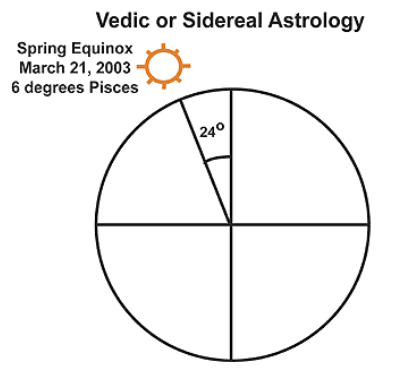
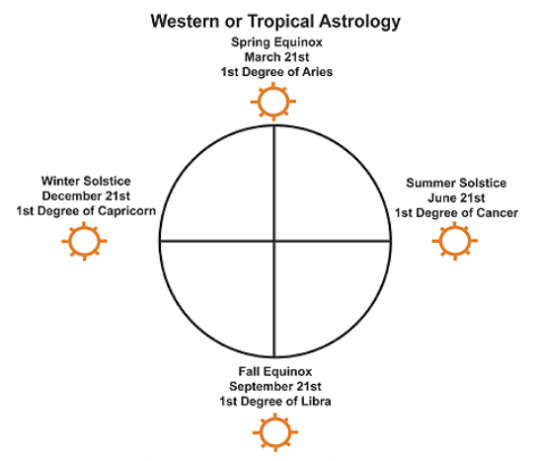
The science behind astrology - why constellations do not matter (excerpt form my main post):
: ̗̀➛ Astrology has NOTHING to do with the physical constellations. Astrology is based on the signs on the ecliptic (the path of the sun amongst the constellations, which is the plane of the earth's orbit).
: ̗̀➛ The equator has 15 constellations, and the ecliptic has 13. So why do we have 12 zodiac signs? This is because babylonians divided the ecliptic into 12 equal segments of 30 degrees each thousands of years ago. The ecliptic was divided into SIGNS. 12 constellations were just used to identify where in the sky each sign would be, at the time for ease of astronomical mapping/calculation - it is merely symbolic. This is why Opphiuchus is not the 13th Zodiac SIGN, although it is a constellation.
: ̗̀➛ Another reason why they are not based off the physical constellations is because the actual size of the constellations vary massively in size. Below is a representation of this:

: ̗̀➛ As you can see, Virgo, for instance is huge, and on a literal view overlaps into the next segment because the constellations do not all equally fit a 30 degree division. Yet, we do not give scorpio like 5 days for its season, because the physical constellation does not dictate anything meaningful.
This gives us the tropical zodiac, which is to do with the earth's seasons:

: ̗̀➛ The solstices are therefore reference points for Capricorn and Cancer (tropic of capricorn and tropic of cancer), not the constellations themselves. Accordingly, the spring equinox is marked by Aries (with the sun entering the segment of Aries at 0 degrees until 29), and the autumn equinox by Libra. Even though in the Southern Hemisphere, the sun entering Aries is an autumnal equinox, ithe fact remains it is still about the seasons (i.e. what the sun does, maintaining its universal application).
: ̗̀➛ The precession of the equinoxes, are therefore irrelevant to astrology (and this is why vedic/sidereal is, in my opinion inaccurate). The slow change of the direction of the earth's axial tilt, over around 26000 years, cause a precession of the equinoxes. This means, the segment of the sky that used to be identified by the Aries constellation from the earth's position at the time, is now looking at Pisces. But as we know, astrology has nothing to do with the physical location of the constellations. Vedic astrologers use sidereal positioning, aka taking into account the precession of the equinoxes, yet they still divide the ecliptic in the same way. This causes problems, leading to many branches in vedic because few agree on where aries actually even starts.
The problems with Sidereal positioning - its all about the sun!
✣ As described in my first post ( i'd really recommend u read it ngl lol), astrology is symbolic, and its entire foundation is based off the sun. It is the sun which gives us life -> therefore it represents our vitality, creativity, identity etc (as opposed to the rising sign which is our personality, who we are, etc and filtered through our chart ruler). Everything comes back down to this SOLAR-based system -> equinox to equinox. Nothing to do with the constellations.
✣ Moreover, the signs are grouped into the 3 modalities, which all represent the suns status (symbolic significations are interpretated separately depending on the sign but generally the groups represents what the sun is doing). The sign which it currently objectively is passing through bears no significance. E.g:
-> Aries, Libra, Cancer, Capricon = Cardinal = sun is crossing the equator when crossing Aries or Libra. When crossing cancer the sun is moving from setting north to south, and vice versa when going through Capricorn. Moving forward, fresh change.
-> Taurus, Scorpio, Leo, Aquarius = Fixed = sun is in the middle of the season it is in, it is 'fixed' and maintaining.
-> Gemini, Sagittarius, Virgo, Pisces = Mutable = sun is transforming by going through the end of its season, undoing and release before the next season starts with the cardinal signs.
✣ Because the position of the constellation depends on where on earth you view it from, there is no obejctive consensus on where Aries even starts. This had led to varying branches of sidereal astrology such as Lahiri, Raman, Krishnamurti Paddhati, and some western takes on Sidereal positioning like Fagan-Bradley. These branches are symptomatic of being overly pedantic by concentrating on the constellations themselves.
✣ Finally, Vic Di Cara is a famous and rare example of a modern day Vedic astrologer who uses the tropical system. Seems blasphemous, but he delves into some irrefutable points on ancient India's use of the tropical system which I will paste below but I really encourage you to read it. Tldr it is still about the sun (surprise suprise):
"The foundational texts of Indian Astrology unanimously and explicitly define the zodiac based on solstices and equinoxes (i.e. tropical). On the other hand, they also unanimously define the nakshatra based on stars (i.e. sidereal). The current difference between the two - the solstices (ayana) and their marker stars - is described as "ayanamsha."
Problem: For many centuries Indian astrologers have applied ayanāṁśa to both the nakshatra and the zodiac - fuseing the two and divorcing the zodiac from its tropical anchors.
Solution: Reform... which requires patience, clarity, contemplation and humility from all parties."
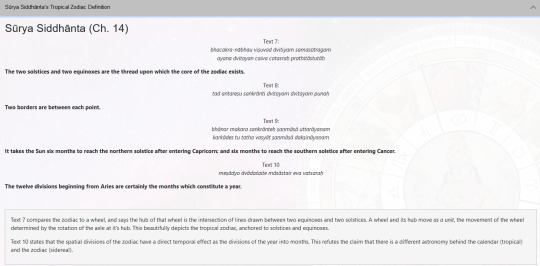




CRUCIALLY:
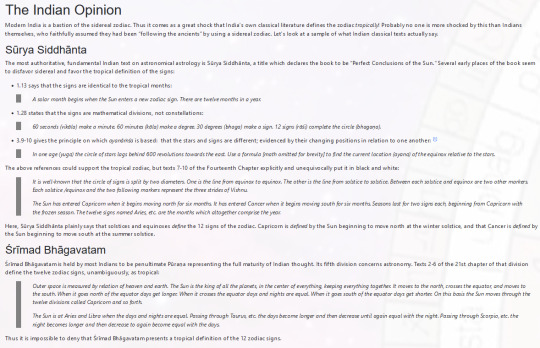


I hope this cleared up any confusions on sidereal vs tropical astrology, and has helped informed your decision on choosing which system to use! I will advise, though, not to mix the systems. This is a common belief for good reason; you would not mix two different languages in a sentence.
#astroblr#western astrology#vedic astrology#tropical astrology#tropical vs sidereal#sidereal zodiac#sidereal astrology#learn astrology#astro notes#astrology observations#astro observations#indian astrology#vedas#vedic#astrology masterlist
11 notes
·
View notes
Text
Archaeologists say Newgrange was simply a tomb. However, the passage and chamber of Newgrange show numerous astronomical alignments. Guest Author Anthony Murphy explores the deeper meaning of this important ancient monument.
16 notes
·
View notes
Text
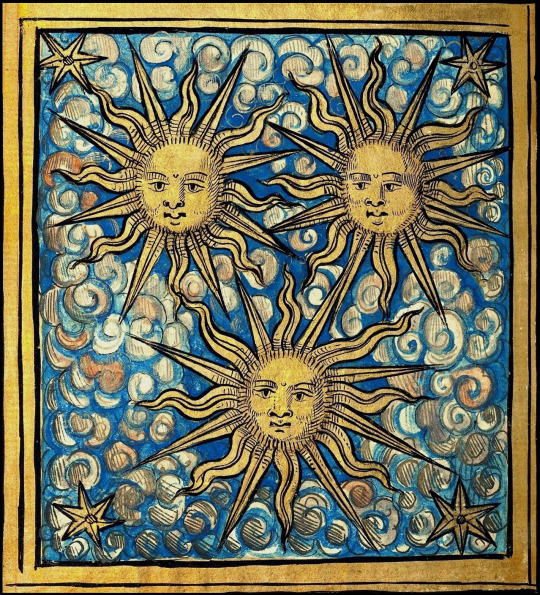
The Solar Trinity
The sun, as supreme among the celestial bodies visible to the astronomers of antiquity, was assigned to the highest of the gods and became symbolic of the supreme authority of the Creator Himself. From a deep philosophic consideration of the powers and principles of the sun has come the concept of the Trinity as it is understood in the world today. The tenet of a Triune Divinity is not peculiar to Christian or Mosaic theology, but forms a conspicuous part of the dogma of the greatest religions of both ancient and modern times. The Persians, Hindus, Babylonians, and Egyptians had their Trinities. In every instance these represented the threefold form of one Supreme Intelligence. In modern Masonry, the Deity is symbolized by an equilateral triangle, its three sides representing the primary manifestations of the Eternal One who is Himself represented as a tiny flame, called by the Hebrews Yod (י). Jakob Böhme, the Teutonic mystic, calls the Trinity The Three Witnesses, by means of which the Invisible is made known to the visible, tangible universe.
The origin of the Trinity is obvious to anyone who will observe the daily manifestations of the sun. This orb, being the symbol of all Light, has three distinct phases: rising, midday, and setting. The philosophers therefore divided the life of all things into three distinct parts: growth, maturity, and decay. Between the twilight of dawn and the twilight of evening is the high noon of resplendent glory. God the Father, the Creator of the world, is symbolized by the dawn. His color is blue, because the sun rising in the morning is veiled in blue mist. God the Son he Illuminating One sent to bear witness of His Father before all the worlds, is the celestial globe at noonday, radiant and magnificent, the maned Lion of Judah, the Golden-haired Savior of the World. Yellow is His color and His power is without end. God the Holy Ghost is the sunset phase, when the orb of day, robed in flaming red, rests for a moment upon the horizon line and then vanishes into the darkness of the night to wandering the lower worlds and later rise again triumphant from the embrace of darkness.
To the Egyptians the sun was the symbol of immortality, for, while it died each night, it rose again with each ensuing dawn. Not only has the sun this diurnal activity, but it also has its annual pilgrimage, during which time it passes successively through the twelve celestial houses of the heavens, remaining in each for thirty days. Added to these it has a third path of travel, which is called the precession of the equinoxes, in which it retrogrades around the zodiac through the twelve signs at the rate of one degree every seventy-two years.
Concerning the annual passage of the sun through the twelve houses of the heavens, Robert Hewitt Brown, 32°, makes the following statement: "The Sun, as he pursued his way among these 'living creatures' of the zodiac, was said, in allegorical language, either to assume the nature of or to triumph over the sign he entered. The sun thus became a Bull in Taurus, and was worshipped as such by the Egyptians under the name of Apis, and by the Assyrians as Bel, Baal, or Bul. In Leo the sun became a Lion-slayer, Hercules, and an Archer in Sagittarius. In Pisces, the Fishes, he was a fish--Dagon, or Vishnu, the fish-god of the Philistines and Hindoos."
A careful analysis of the religious systems of pagandom uncovers much evidence of the fact that its priests served the solar energy and that their Supreme Deity was in every case this Divine Light personified. Godfrey Higgins, after thirty years of inquiry into the origin of religious beliefs, is of the opinion that "All the Gods of antiquity resolved themselves into the solar fire, sometimes itself as God, or sometimes an emblem or shekinah of that higher principle, known by the name of the creative Being or God."
The Egyptian priests in many of their ceremonies wore the skins of lions, which were symbols of the solar orb, owing to the fact that the sun is exalted, dignified, and most fortunately placed in the constellation of Leo, which he rules and which was at one time the keystone of the celestial arch. Again, Hercules is the Solar Deity, for as this mighty hunter performed his twelve labors, so the sun, in traversing the twelve houses of the zodiacal band, performs during his pilgrimage twelve essential and benevolent labors for the human race and for Nature in general, Hercules, like the Egyptian priests, wore the skin of a lion for a girdle. Samson, the Hebrew hero, as his name implies, is also a solar deity. His fight with the Nubian lion, his battles with the Philistines, who represent the Powers of Darkness, and his memorable feat of carrying off the gates of Gaza, all refer to aspects of solar activity. Many of the ancient peoples had more than one solar deity; in fact, all of the gods and goddesses were supposed to partake, in part at least, of the sun's effulgence.
The golden ornaments used by the priestcraft of the various world religions are again a subtle reference to the solar energy, as are also the crowns of kings. In ancient times, crowns had a number of points extending outward like the rays of the sun, but modern conventionalism has, in many cases, either removed the points or else bent: them inward, gathered them together, and placed an orb or cross upon the point where they meet. Many of the ancient prophets, philosophers, and dignitaries carried a scepter, the upper end of which bore a representation of the solar globe surrounded by emanating rays. All the kingdoms of earth were but copies of the kingdoms of Heaven, and the kingdoms of Heaven were best symbolized by the solar kingdom, in which the sun was the supreme ruler, the planets his privy council, and all Nature the subjects of his empire.
Many deities have been associated with the sun. The Greeks believed that Apollo, Bacchus, Dionysos, Sabazius, Hercules, Jason, Ulysses, Zeus, Uranus, and Vulcan partook of either the visible or invisible attributes of the sun. The Norwegians regarded Balder the Beautiful as a solar deity, and Odin is often connected with the celestial orb, especially because of his one eye. Among the Egyptians, Osiris, Ra, Anubis, Hermes, and even the mysterious Ammon himself had points of resemblance with the solar disc. Isis was the mother of the sun, and even Typhon, the Destroyer, was supposed to be a form of solar energy. The Egyptian sun myth finally centered around the person of a mysterious deity called Serapis. The two Central American deities, Tezcatlipoca and Quetzalcoatl, while often associated with the winds, were also undoubtedly solar gods.
In Masonry the sun has many symbols. One expression of the solar energy is Solomon, whose name SOL-OM-ON is the name for the Supreme Light in three different languages. Hiram Abiff, the CHiram (Hiram) of the Chaldees, is also a solar deity, and the story of his attack and murder by the Ruffians, with its solar interpretation, will be found in the chapter The Hiramic Legend. A striking example of the important part which the sun plays in the symbols and rituals of Freemasonry is given by George Oliver, D.D., in his Dictionary of Symbolical Masonry, as follows:
"The sun rises in the east, and in the east is the place for the Worshipful Master. As the sun is the source of all light and warmth, so should the Worshipful Master enliven and warm the brethren to their work. Among the ancient Egyptians the sun was the symbol of divine providence." The hierophants of the Mysteries were adorned with many. insignia emblematic of solar power. The sunbursts of gilt embroidery on the back of the vestments of the Catholic priesthood signify that the priest is also an emissary and representative of Sol Invictus.
--Secret Teachings of All Ages: The Sun, A Universal Deity
25 notes
·
View notes
Note
What are the differences between sidereal and draconic charts compared to tradition or tropical? What can you use them for and what do they mean?
this is actually a pretty huge topic and something i might write more extensively on later but let's do a rundown here.
what is traditional is going to depend a lot on where you are from and who you learn from. vedic and western tropical are the two most traditonal ones i think, and it seems like you are referring to tropical here, but i want to be clear that's not always the case.
so, tropical: this doesn't take into account the precession of the equinoxes over thousands of years, which is why it no longer lines up with the visible stars. i discuss this in more detail in this book and it's also something you can do your own research on if you wish. in this system each sign is just a thirty-degree chunk of the sky, and the 0 degree of aries is determined by the day of the vernal equinox in the northern hemisphere (autumnal in south) NOT by the actual beginning of the constellation of stars that looks like aries the ram. i do not have any good scientific reason why this method should work better than any other, but my experience is that it is the best, and it is very old and widely used around the world so others must agree! i use this for pretty much everything although i know a thing or two about some other chart systems.
sidereal: DOES account for the precession of the equinoxes and DOES more or less line up with the actual stars as a result. but make no mistake, there's more than one way to do a sidereal chart. for instance, vedic astrology popular in india is one sidereal system. it uses the same 12 zodiac signs as the tropical system i use, but additional information and if i understand right also each sign is 30 degrees so it doesn't line up perfectly with the stars (someone correct me on this if i'm wrong in the replies please~). but there are other sidereal systems that don't have evenly sized signs, or they do but they incorporate eg the 13th sign, ophiuchus. i have written some before about how i feel like these sorts of systems SHOULD be more accurate but in my personal experience never are. the physicist/astronomer in me doesn't like that but whatever, i don't make the rules.
one thing i have heard is that while tropical is best for knowing thyself, sidereal or at least vedic is better for making predictions. i'm digging into that a little bit on my own time but i think tropical does predictions fairly well itself if you know what you're doing! since i am not as well-versed in vedic i still use tropical for my predictions and while i may not know the minute details it never really gets the vibe wrong.
draconic: a bit of a different thing. i offer these readings in my etsy. like everything i do, it varies a little bit from the most traditional/conventional manner. but it seems to work nicely. i think this style of chart has its origin in vedic astrology where the lunar nodes are the head and tail of the dragon, but it seems a lot of people do this chart in a tropical system anyway. it's defined by making the north node the 0 degree of aries and building the rest of the chart around that. so the planets and spacing of everything are the same as in the tropical natal chart, but the signs change. the idea is that this shows you something about your karma, your soul, your overarching personality in a way that is bigger than your personal egoic small self life as you know it. it's very esoteric and cool.
draconic charts are always really similar to natal charts. they are for a *person*. but you can do vedic or tropical charts about an individual, a meeting, a synastry, an event, a horary chart, etc. so that is another difference.
another thing i want to mention which you didn't ask explicitly but might interest you is all of the above are geocentric approaches. you can also do heliocentric astrology! i'm delving into that too because that's one of those things my science brain wants to work so much, lol. it is not widely practiced in the mainstream but astro dienst will generate heliocentric charts if you check off the right boxes. it's fun to play with. the big change is you no longer have a sun sign, you have an earth sign, and it is opposite whatever your natal sun sign is in tropical (eg i'm a taurus sun, but in heliocentric i have my earth in scorpio.)
that seems like a long post but seriously it just scratches the surface. i hope it helps anyway, and maybe spurs some further investigation! thank you for the excellent question <3 will definitely be reblogging this one for posterity~
9 notes
·
View notes